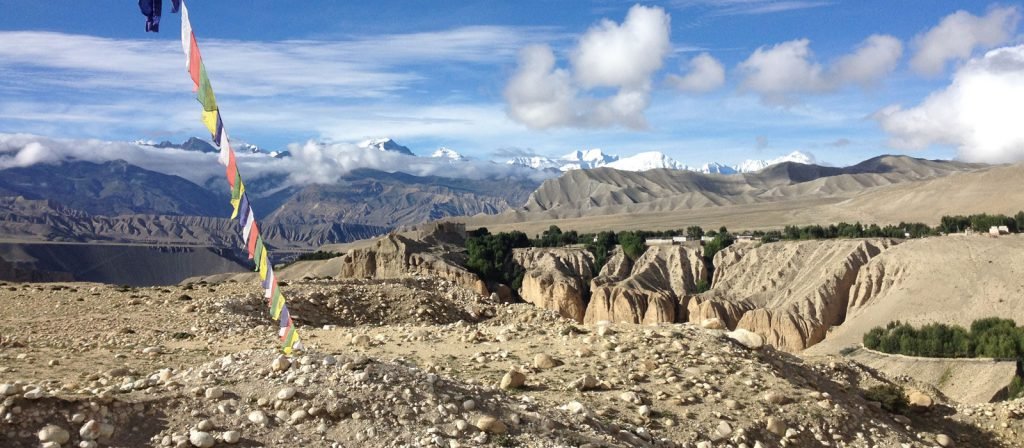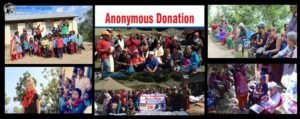Day 1: Kathmandu (1310m/4298ft)
You arrive in Kathmandu and are transferred to the hotel. A pre-trek briefing will be scheduled to discuss the trekking program and co-ordinate any last-minute arrangements.
Day 2: Kathmandu: Sightseeing and Trek preparation
Today after breakfast we start a guided tour to several of the most historical and spiritual attractions in Kathmandu. Some of these landmarks include the World Heritage Sites: the historic Durbar Square, the sacred Hindu temple of Pashupati Nath, the famous ‘Monkey Temple’ (Swayambhunath) and Buddhists shrine (Buddha Nath) which is one of the largest Stupas in the world. In the afternoon, there will be a pre-trip discussion where we can meet our trek leader and other team members.
Day 3: Kathmandu to Sarengkot via Pokhara (1500m)
This morning we fly to the lakeside town of Pokhara, 206kms from Kathmandu. After lunch in Pokhara, we take a boat to visit the island in the lake, and then continue across the lake, from where we begin our trek to Sarangkot.
Day 4: Drive to Naya Pul (New bridge), and Trek to Tikhedhungaga (1525m).
After breakfast, we trek to Naudanda, and from there travel by road to Naya Pul – the drive taking about 1 hour. We then commence our trek to Birethanti, a large and prosperous town beside the Modi Khola River. We head up the main trail to Sudami where we climb gradually up the side of the valley, reaching Hile (1495m) before pushing on to Tikhe Dhunga. This is a short, relatively easy day, which allows us to become used to the experience of trekking in Nepal.
Day 5: Trek to Ghorepani (2850m/9350ft).
From Tikhe Dhunga the trail climbs steeply to Ulleri, a large Magar village at 2070m. It continues to ascend, but more gently, through rhododendron and oak forests and across streams to Banthanti (2250m), before making a short, final climb to Nangethanti (2460m). From Nangethanti we head up to Ghorepani (2850m).
Day 6: Ghorepani to Poon Hill to Tatopani (1180m).
An early start at around 5am, and an hours hiking to Poon Hill (3195m) leads us to a brilliant spectacle. This vantage point provides an unobstructed view of sunrise over the high Himalayas – one of the best Himalayan viewpoints in Nepal. After spending about 40 minutes on the hillside, we return to Ghorepani, have a hot breakfast, and start walking to Tatopani. On leaving Ghorepani, the trail descends steeply to Chitre at 2390m. The hills are extensively terraced as the trail drops down through Sikha, a large village with shops and hotels at 1980m, and then descends gently to Ghara at 1705m. A further steep descent of 500m takes you to the Ghar Khola where the trail crosses the river on a suspension bridge and then climbs up above the Kaligandaki River before crossing that too. Turning north the trail soon reaches Tatopani at 1180m. Tato means ‘hot’ and pani is ‘water’, a name earned by courtesy of the hot springs. It is very beautiful place with relaxing hot spring pools by the Kaligandaki river. Tatopani is one of the more popular destinations in this region.
Day 7: Tatopani to Ghasa (2080m).
The trail continues up the Kali Gandaki gorge, which is considered to be the deepest gorge in the world, situated as it is between the two 8000m peaks of Annapurna and Dhaulagiri. The trail rises gently to reach Dana at 1400m, and on to Rupse Chhahara at 1550m, where there is a stunning waterfall. The trail then crosses to the eastern bank of the river to reach Kopchepani, but then crosses back to the western side on a suspension bridge at 1935m. A steep climb follows the suspension bridge to reach Pahirothapla, the border of two districts (Magdi & Mustang) and the trail then continues to climb to Ghasa at 2080m.
Day 8: Ghasa to Tukche(2590m).
We continue to ascend and pass through Lete at 2470m, shortly before arriving at Kalopani at an elevation of 2560m. Here we obtain superb views of the Nilgiri peaks to the east. We then cross to the eastern side of the river, but cross back again further up the trail before entering Larjung at 2560m. We then continue on a short distance to the interesting village of Khobang with its narrow alleyways. We overnight in the ancient Thakali village of Tukuche at 2590m
Day 9: Tukche to Kagbeni (2810m).
The trek continues up the Kali Gandaki, with the terrain becoming much more barren and the breeze increasing as it passes through the gorge. On the way to Marpha we pass a Tibetan refuge settlement and then a horticulture research station. Marpha at 2665m is a large Thakali village with many excellent teahouses, but it still retains the typical architectural features of narrow alleyways, flat roofs, and whitewashed buildings. There is also a superb Nyingmapa Buddhist gompa, which can be visited. After Marpha, the trek continues along the side of the valley to reach Jomsom at 2713m. Jomsom is a large, bustling settlement, which is the administrative centre of the region, containing the airport, army camp, and numerous hotels, shops, banks and government offices. We cross the river to the eastern bank and continue onwards to Eklai Bhatti at 2730m. From here there is a direct route to Muktinath that ascends the hill behind the village, however we follow the trail along the river to Kagbeni at 2810m. Kagbeni is situated at the junction of the Jhong Khola and the Kali Gandaki, and is the northernmost village that can be visited without a permit to continue on to Mustang. It is a fascinating village with many Tibetan influences. Kagbani is a gateway to the upper Mustang trek.
Day 10: Kagbeni to Muktinath (3800m).
From Kagbeni, the trail make a steep climb up the Jhong Khola valley to join the direct trail to Muktinath just below Khingar at 3200m. From here we continue on the trail high above the Jhong Khola to the imposing village of Jharkot at 3500m. This village is well worth exploring and so we will stop here for lunch or a tea break before continuing on to Muktinath. From Jharkot the trail climbs up to our ultimate destination of Muktinath at 3800m. We initially reach Ranipauwa where there are many teahouses and shops, and where we stay for the night. The actual religious site of Muktinath is a further 10 minutes walk up the hill, and this area is kept free of hotels and camping sites. Muktinath is a pilgrimage center for Buddhists and Hindus. You’ll see Tibetan traders as well as sadhus from the far south of India. The shrines in a grove of trees include a Buddhists gompa and the Vishnu temple of Jwalamai. An old temple nearby shelters a spring and natural gas jets that provide Muktinath’s famous eternal flame. It’s the earth-water-fire combination that accounts for Muktinath’s great religious significance.
Day 11: Muktinath to Jomsom (2713m).
Today we descend back to Jomsom – with beautiful high mountain scenery & views of Dhaulagiri, Nilgiri & other mountains
Day 12: Jomsom to Pokhara (1500m).
This morning we take a flight from Jomsom back to Pokhara – the flight is only about 20 minutes, but is amazing, with stunning views at it passes between the Annapurna Himal & Dhaulagiri Himal. On our return to Pokhara, we include a sightseeing tour, including visits to David Falls, Shiva Cave & Seti Gorge, with the remainder of the day free for you to explore Pokhara or relax
Day 13: Fly Pokhara to Kathmandu (1310m)
After a relaxing start to the day, we take a flight back to Kathmandu around noon. The remainder of the day is free.
Day 14: Final Departure









